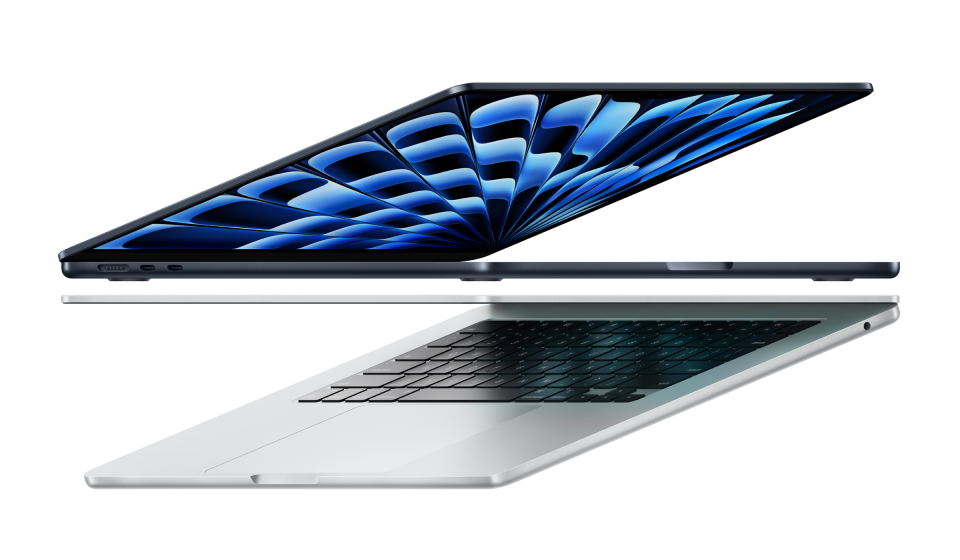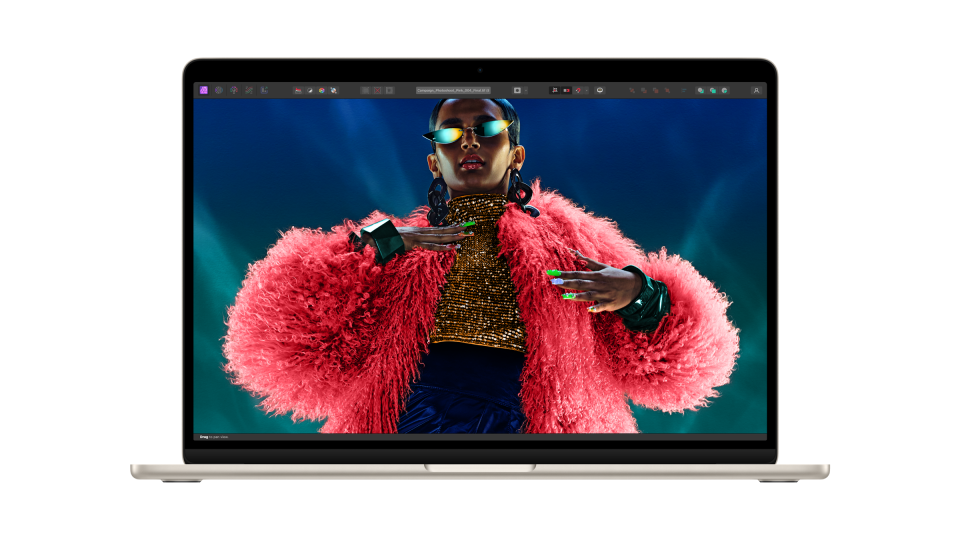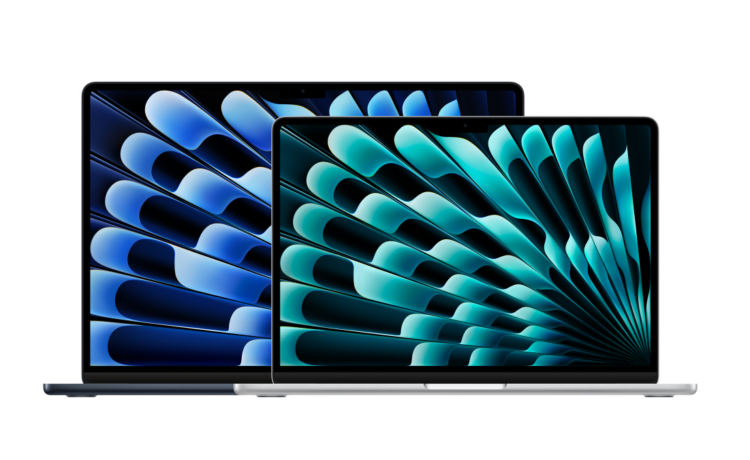Apple’s (AAPL) MacBook Air is one of the best laptops on the market. From its stylish design to its powerful performance and long-lasting battery, it’s hard to top what Apple has to offer. Well, except if you’re looking for a Windows laptop.
But if you’re an Apple fan, or are curious about switching to the other side, the MacBook Air is, generally, the way to go. And that’s no different with the company’s newest 15-inch variety. After spending a few days with the 2024 MacBook Air 15-inch, I can say it’s better than ever. But it still has one nagging downside: a lack of connectivity ports on its right side.
Available March 8, the latest Air lineup gets a processor bump from Apple’s M2 processor to the newer M3. The smaller 13-inch model starts at $1,099, while the 15-inch starts at $1,299.
Both are available in a midnight color that features the same anodized seal that helps cut down on fingerprint smudges, something I wish my 2023 15-inch midnight MacBook Air had. I know it’s not that big of a deal, but when you’re spending north of $1,000 on something you touch every day, you want it to keep looking as clean as the day you bought it.
My review unit came equipped with Apple’s 8-core CPU, 10-core GPU M3 chip, 16GB of memory, and 512GB of storage for $1,699. And if you’re in the market for the 15-inch Air, that’s the exact configuration I’d recommend you buy. It’ll get you enough performance to last a long time thanks to its 16GB of memory, and 512GB of storage should be enough for a game here and there, as well as your photos and videos.


If you want to go all out, though, you can boost the memory to 24GB and storage to 2TB for $2,499. That said, for the same price, you could get a 16-inch MacBook Pro with a more powerful M3 Pro chip, 18GB of memory, and 512GB of storage.
If you want to do some basic photo and video editing and light gaming, stick with the Air. But if you’re interested in heavy-duty photo and video work, gaming, and working on 3D modeling software, the Pro is the way to go.
As far as overall performance goes, Apple says the latest Air outpaces last year’s model with 20% faster CPU performance than the M2 Air and 35% better performance than the M1-equipped model. Graphics also get a boost, with the M3 Air beating out the M2 and M1 models with 20% and 65% better performance, respectively.
I’m writing this review with the M3-powered Air, and I haven’t seen any slowdown or hiccups. It opens apps quickly, springs to life when I lift the lid, and manages to run the game “Baldur’s Gate 3” relatively well on low to medium graphics settings. It doesn’t look as good as it would on, say, a dedicated gaming desktop or console, but if you’re looking to toss fireballs at goblins on the go, the Air will get the job done.
The latest MacBook Airs also now support two external displays when you close their lids. So if you want to just use your Air as more or less a computing box and work off of those separate screens and a bluetooth keyboard and bluetooth mouse, you can do just that. Disconnect your Air from the setup and you can get going with ease.


Battery life is as fantastic as you’d expect from an Air running on one of Apple’s chips. The company says it managed to ring out 18 hours of battery life from the Air while playing back 1080p video via iTunes. I’ve used this review unit to write, browse the web, check out some video games, and more, and the battery never touched the red line.
Of course, I kept recharging it every time I sat down at my makeshift workstation in my apartment’s kitchen/living room/dining room area, but when I did take it for a spin to another room, I never felt the need to bring a charger with me.
One of the things that stands out about the M3-powered MacBook Air is the way Apple is positioning it as an AI machine. The company refers to the Air as the “world’s best consumer laptop for AI,” thanks to the M3’s built-in neural engine. It’s important to note that Apple has included neural engines in its chips for quite some time already, so the neural engine in the M3 isn’t exactly some kind of new development.
It’s more that by highlighting it, Apple is telling the world that it’s been building AI-capable laptops, desktops, and smartphones for years, while Windows laptops are only just beginning to embrace AI via Microsoft’s (MSFT) Copilot and AI-enabled chips from Intel (INTC), AMD (AMD), and Qualcomm (QCOM) on or coming to market this year.
My only real critique of the MacBook Air is that it only has two Thunderbolt 4 ports on its left side. It seems like a minor complaint, but having the ports, which are compatible with rounded USB-C connectors, on only one side can make cable management difficult, especially if you’re used to having a connector on your system’s right side. I had to rearrange my home setup to get comfortable with my review unit, for instance.
Overall, Apple’s latest MacBook Air builds on the success of its prior offerings and continues to carry the torch as one of the best laptops you can buy. If you’ve already got an M1 or M2-powered Air, you’re fine holding on to your unit for a while longer. If you’re still working with an Intel-based Air, though, it’s time to ditch that dinosaur for an Air with one of Apple’s chips.
It’s worth keeping in mind that Apple is continuing to offer last year’s 13-inch MacBook Air with an M2 chip at a starting price of $999. You don’t get the slick fingerprint-reducing paint job or the ability to use two external monitors, but it’s still a fantastic laptop.
If you’d rather grab an M3-powered MacBook Air, though, you won’t be disappointed.
Daniel Howley is the tech editor at Yahoo Finance. He’s been covering the tech industry since 2011. You can follow him on Twitter @DanielHowley.
Click here for the latest technology news that will impact the stock market.
Read the latest financial and business news from Yahoo Finance
















